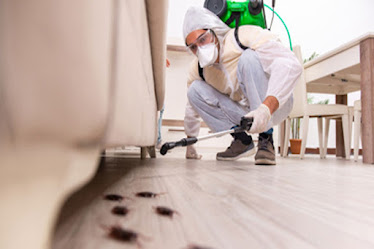The Risks Associated with Bee Infestations and How to Prevent Them
Bees are some of the most fascinating creatures on our planet. These tiny powerhouses play a crucial role in our ecosystem, but they also come with their fair share of risks, especially when they decide to take up residence where they shouldn't. we're going to delve deep into the world of bee infestations, exploring the potential dangers they pose and, more importantly, how to prevent them. So grab your virtual beekeeper's suit, and let's dive into this hive of knowledge.
The Buzz about Bees
The Importance of Bees
Before we dive into the risks and prevention of bee infestations, it's crucial to understand just how vital these tiny insects are to our ecosystem. Bees, especially honeybees, are the unsung heroes of our agricultural system. They're responsible for pollinating a significant portion of the world's food crops, including fruits, vegetables, and nuts. Without them, our dinner plates would be pretty bare.
Types of Bees
Not all bees are created equal, and understanding the different types can help us better appreciate their importance. There are over 20,000 species of bees worldwide, but we mainly encounter three types in our daily lives: honeybees, bumblebees, and solitary bees. Each has its unique characteristics and roles within the ecosystem.
The Dark Side of Bee Infestations
Bee Infestations: What Are They?
A bee infestation occurs when a colony of bees decides to build their hive in an unwanted or inconvenient location, such as inside your home or office building. While bees are fascinating creatures, having them as uninvited guests can be a real challenge.
The Risks of Bee Infestations
So, what's the big deal with having bees set up shop in your attic or garden shed? Well, there are several risks associated with bee infestations that you should be aware of:
Allergic Reactions
One of the most immediate dangers of bee infestations is the risk of allergic reactions. For some people, even a single bee sting can trigger severe allergic responses, including anaphylaxis. This life-threatening condition can lead to difficulty breathing, swelling, and even death if not treated promptly.
Structural Damage
Bees are master builders, but they're not great at respecting property boundaries. When they decide to build their hive inside the walls or attic of your home, they can cause significant structural damage. Over time, this can lead to costly repairs and compromised safety.
Aggressive Behavior
While bees are generally not aggressive, they can become defensive when their hive is threatened. Bee infestations near high-traffic areas can lead to increased encounters and, in some cases, stinging incidents. Nobody wants to run a daily gauntlet of angry bees in their own backyard.
Pest Infestations
Bee infestations can attract other unwanted guests, such as ants, cockroaches, and rodents, who are drawn to the honey and bee larvae. This can lead to secondary pest infestations, turning your bee problem into a full-blown pest nightmare.
Prevention is Key
How to Prevent Bee Infestations
Now that we've highlighted the risks of bee infestations let's talk about how to prevent them. After all, an ounce of prevention is worth a pound of cure.
Seal Entry Points
The first step in preventing bee infestations is to seal all potential entry points. Inspect your home or property for gaps, cracks, or openings where bees could sneak in. Use sealants and screens to block these access points and keep the bees out.
Regular Inspections
Regular inspections are crucial in catching potential bee infestations early. Keep an eye on your property, especially areas where bees might be attracted, such as flowering plants or water sources. If you spot any signs of bee activity, take action promptly.
Remove Attractive Nuisances
Bees are drawn to certain things, such as sweet-smelling flowers or open containers of sugary liquids. To reduce the attractiveness of your property to bees, make sure to keep food and drinks covered and limit the number of flowering plants close to your home.
Professional Help
If you suspect a bee infestation or have a history of bee problems, it's best to call in the professionals. Bee removal experts have the knowledge and equipment to safely relocate bee colonies without harming the bees or your property.
Bee-Friendly Gardens
Creating a bee-friendly garden is another way to prevent bee infestations while supporting these essential pollinators. Planting bee-friendly flowers and herbs can help keep bees busy outdoors, away from your home's interior.
Conclusion
In conclusion, bees are incredible creatures that play a vital role in our ecosystem. However, when they decide to make themselves at home in our living spaces, there can be significant risks involved. Allergic reactions, structural damage, aggressive behavior, and secondary pest infestations are just a few of the dangers associated with bee infestations.
The good news is that prevention is entirely possible. By sealing entry points, conducting regular inspections, removing attractive nuisances, and seeking professional help when needed, you can minimize the risk of bee infestations. Additionally, creating a bee-friendly garden can help redirect these important pollinators away from your living areas.
So, while we should continue to appreciate the vital role bees play in our world, we should also take steps to ensure that they stay where they belong – in the great outdoors, pollinating our plants and providing us with the delicious honey we all love.
In the end, it's all about finding a harmonious coexistence with these incredible creatures, so we can enjoy the fruits of their labor without any uninvited surprises in our homes.


Comments
Post a Comment